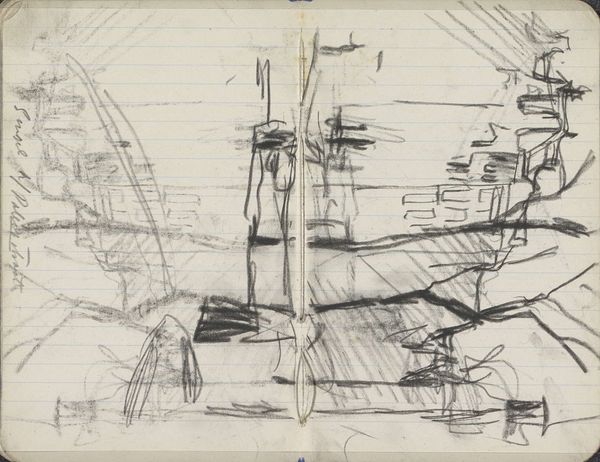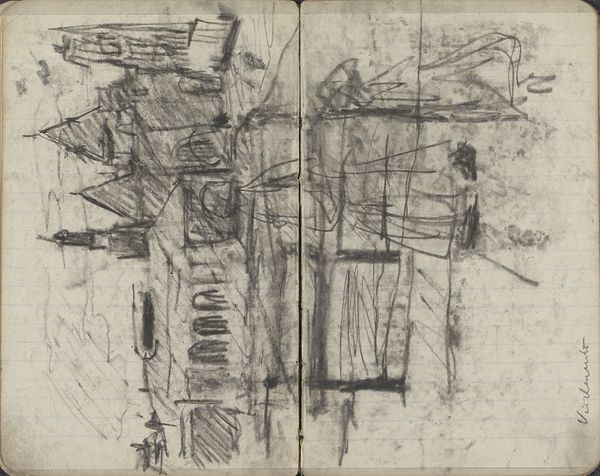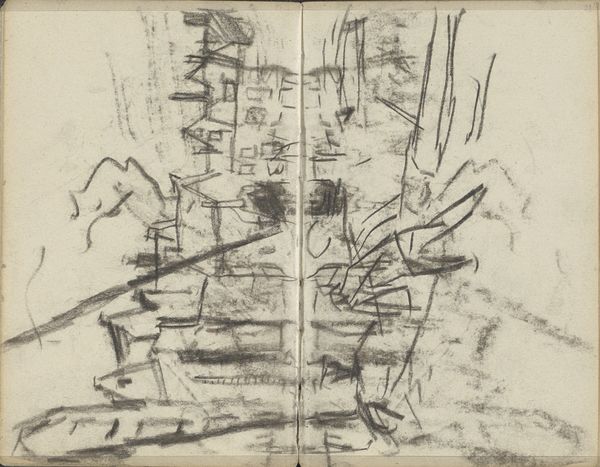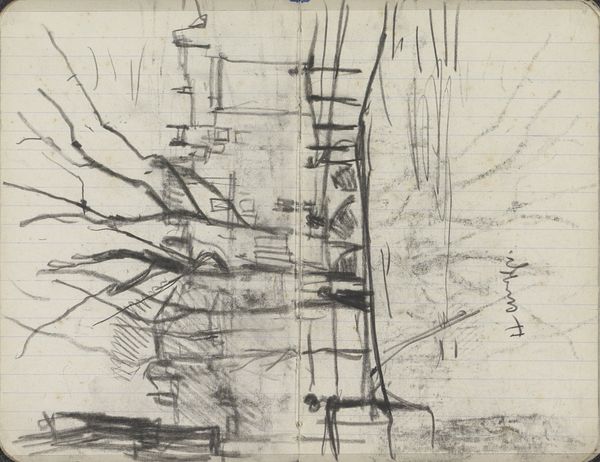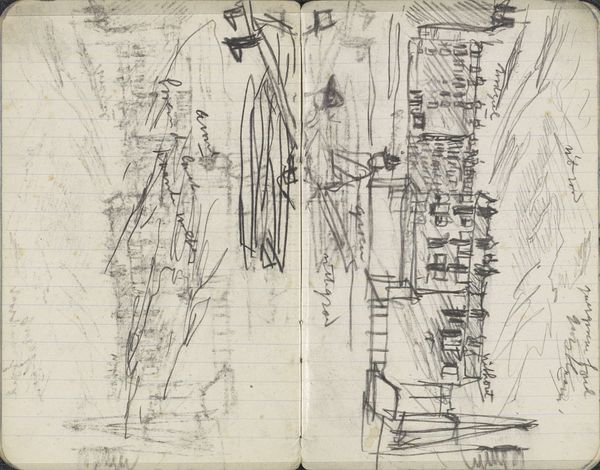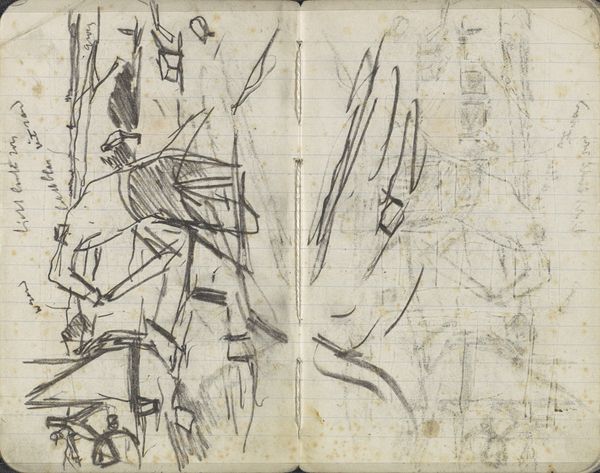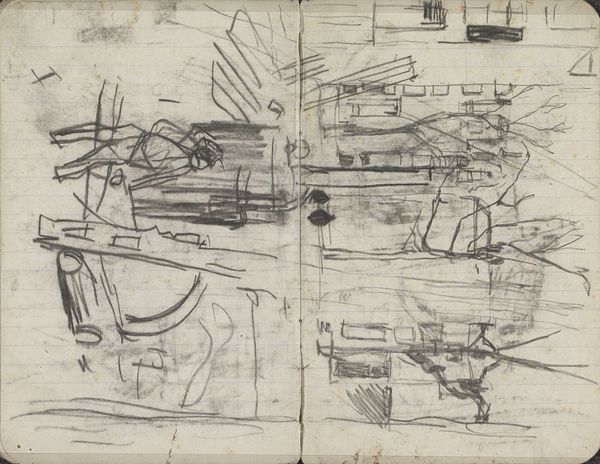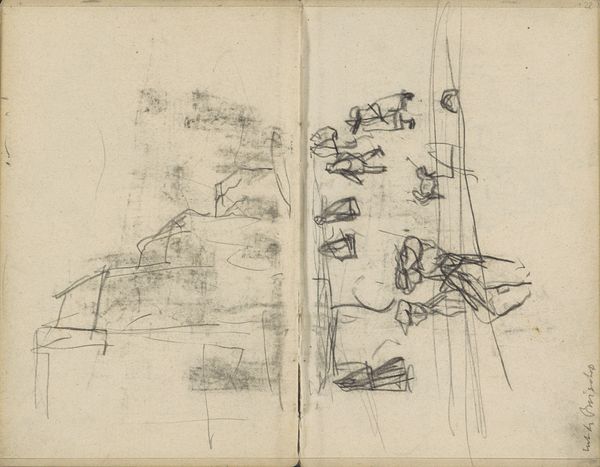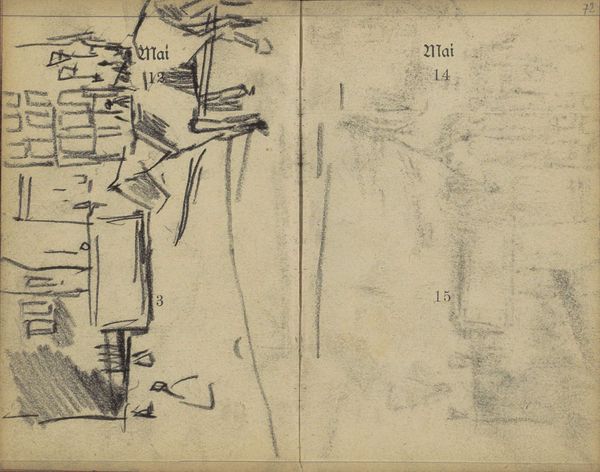
Brug over de Warmoesgracht in Amsterdam ter hoogte van het Singel 1892 - 1894
0:00
0:00
georgehendrikbreitner
Rijksmuseum
Copyright: Rijks Museum: Open Domain
Editor: So this is George Hendrik Breitner's "Brug over de Warmoesgracht in Amsterdam ter hoogte van het Singel," created between 1892 and 1894. It’s a pencil drawing on toned paper, currently held at the Rijksmuseum. It feels so immediate, almost like a glimpse into the artist’s personal observations. What strikes you about this piece? Curator: It's more than just a quick sketch; it’s a portal into the rapid urbanization of Amsterdam at the turn of the century and Breitner's navigation through it. The Warmoesgracht, once a canal bustling with commerce, was being transformed by the encroachment of modernity. Do you see how the sketch captures not just the bridge, but the implied hustle and bustle, the layering of the old and the new? It almost seems as if Breitner uses the city itself to make a statement of his time. Editor: Yes, the energy is definitely there. It's like he’s trying to capture the fleeting moments of a changing Amsterdam. But what about the medium? Why choose pencil and paper for such a subject? Curator: That choice is key. Breitner was deeply interested in capturing the everyday lives of working-class people, their movements, and their surroundings without idealizing them. Pencil sketches were quick, accessible, and unpretentious – perfectly suited to documenting the realities of a rapidly evolving urban landscape. The immediacy of the medium reflects a democratic impulse, documenting scenes often ignored by the dominant narratives of the time. Consider it almost a form of artistic activism through observation. How do you view this urgency of line and tone in light of later social documentary photography? Editor: That makes perfect sense! I didn’t think about the deliberate choice of a readily accessible medium and the connection with social documentary. This connects with the democratization of the artwork. Curator: Exactly. Breitner's sketches invite us to reconsider what constitutes valuable subject matter. They also force us to examine the power dynamics inherent in representation – who gets seen, and how. Editor: That’s given me so much to think about. I’ll definitely look at Breitner’s work with fresh eyes now, thinking about it as an act of bearing witness. Curator: Precisely! And that is why we can discover that, in a deceptively simple sketch, the complexities of social change in Amsterdam and how these urban transformations affected its people come to the surface.
Comments
No comments
Be the first to comment and join the conversation on the ultimate creative platform.


